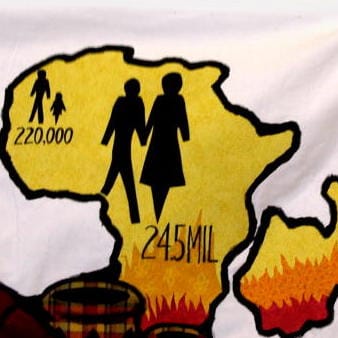The bigger danger: putting the spotlight back on HIV/AIDS
As the media concentrate on the latest epidemic threat, major problems like HIV-AIDS – which kills more than one and a half million people every year, with Sub-Saharan Africa the worst affected – have fallen into the background. Journalists have an important role to play in improving both...


As the media concentrate on the latest epidemic threat, major problems like HIV-AIDS – which kills more than one and a half million people a year – have fallen into the background. Journalists have an important role to play in improving both awareness and public policy.
By UMA MUTHIA
You sit down with your morning coffee and flick open the newspaper. The headline is about ebola – the panic, the spread of the disease, the deaths.
History has a tendency to repeat itself and in the 1980s, a similar epidemic gripped the globe: panic ensued, infected populations were stigmatised and medical scientists worked furiously to find a cure. It’s been 30 years since that panic was identified as HIV/AIDS.
In 2014, the ebola outbreak dominated global media attention. With the focus on Africa, the media revealed the devastating effects of the disease, with the death toll for this outbreak now above 7400 people.
As the international community scrambled for a solution, attention was inadvertently directed away from what is still the biggest cause of death in the African continent – HIV/AIDS.
Media coverage of HIV/AIDS has diminished in recent years despite it remaining an extensive issue worldwide. This lack of attention can lead to the dangerous assumption that HIV/AIDS is under control.
In many respects, it is: deaths have decreased, the number of infected people has gone down, the stigmatisation of affected populations has diminished and education has led to better preventative strategies in combating the disease.

But despite this progress, HIV/AIDS remains one of the major causes of death globally. The World Health Organisation reported that in 2012, more then 35 million people were living with HIV. That year, it killed 1.6 million people.
In 2013, the only area in the world to record a decrease in life expectancy was Sub-Saharan Africa, where HIV/AIDS was responsible for a reduction of five years since 1990. Life-expectancy in the rest of the world rose six years in that time, it was reported in the British medical journal, The Lancet.
Edith Cowan University Associate Professor Trevor Cullen, who has done extensive research on health and HIV reporting, said the media needed to see that HIV was more than just a health crisis in far-away countries.
"It’s much closer to home," he said. "For example, HIV cases in WA are the highest they’ve been in 20 years.”
Since the beginning of the epidemic, more than 75 million people have been infected with the HIV virus, yet there is still no cure. While antiretroviral therapy is available, the Foundation for AIDS Research said that in 2013 only 12.9 million people living with HIV (37 per cent of the total) had access to the treatment.
Prof Cullen said wider circulation of individual HIV stories could help.
“Get people to share their stories and experiences of living with HIV. This can lessen fear and stigma and improve understanding and response,” he said.
One such initiative is already working to facilitate greater dialogue on HIV through independent international research and the media.
The Pulitzer Centre on Crisis Reporting, based in Washington DC, is a media organisation that has taken steps to regenerate dialogue on HIV in the news and shine a spotlight on key areas often ignored by the mainstream media.

Pulitzer Health Project manager Zach Child spoke of the crucial role journalism played in the fight against stigma and discrimination.
“At the moment, there are still many people who are limited to accessing HIV preventative services, and often, it’s the vulnerable groups in society such as sex workers, gay men, transgender people and people who inject drugs,” he said at the Monash University HIV-AIDS and Journalism Conference in 2014.
“The Russian Government, for example, openly criticises drug users. Many drug users have been infected with HIV but with overt public stigmatisation, the barriers to treatment and help are severely limited for them.”
Using visualisation and multimedia case studies, the Pulitzer Centre supports projects all over the world, providing opportunities for journalists whose works would not usually be reported in the Western media.
“We work with these journalists and look for opportunities to amplify the impact of their stories. We look for conferences like AIDS 2014 and help journalists have conversations with the local community, medical experts, policy makers and students, about these issues,” he explained.
Media influences society, whether that influence is used consciously or not. "What journalists write or broadcast can influence public debate and policy decisions," Prof Cullen said.
With the decrease of HIV coverage since the 1990s, he said he believed there was an inherent need for the media to revive discourse on the virus, as it remained one of the world’s biggest killers.
A focus on vulnerable populations and world regions most severely affected by HIV-AIDS would raise the standard of reportage and engage both the public and government policy-makers.
“With more than 35 million people infected and up to 6000 new HIV infections each day- it’s time for the media to use much more initiative to keep HIV in the public forum”, Prof Cullen said.





